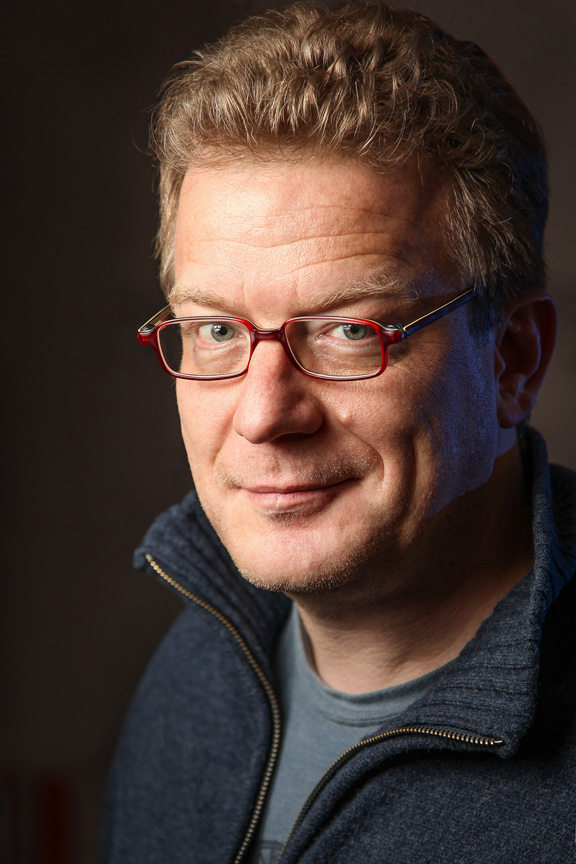It’s Guest Blog Wednesday featuring Tilo Gockel!
Loving Light
Hello everyone. My name is Tilo Gockel. I'd like to start by saying that I am incredibly honored to have the opportunity to share my thoughts with you on Scott Kelby's blog. I've been a professional photographer for seven years now. Previous to that I was an engineer, where I was in close contact with image sensors, video transmission, pattern projectors, and optics. Nevertheless, it took me quite some time to understand the technical challenges and the creative impact of photography. After years of practice I've now come to think of photography like learning a new instrument: I had to (and still have to) practice the scales, so to speak.
Let's rewind to when I started out. It did not take long for me to become totally addicted to light and lighting. From there, the obsession grew to include flash, because flash yields the most possibilities of all the artificial light sources. Then I took another small step and got interested in the "Strobist" field and community. I thought, "Wow, look at all these shots made with some inexpensive off-brand speedlights from Asia. I want to be able to do this!"
Lighting with all variety of flash units does imply a bit of technical expertise, even in a time of tethered shooting, TTL, modeling flash, and many other great options and features. For me, as a former nerdy engineer (still nerdy, to be honest), using flash offered the perfect combination of fiddling a bit with cool technical stuff and being creative.
I love to try something new on every shoot. I really don't like to do the same old routine day after day. I remember a photo job during which I had to shoot rubber gaiters and shoe stretchers. Dozens of them, in all colorsâ”after two days, I hated it! For me, I have to be doing something new to stay interested, like shooting underwater, "bokehrama" images, powder and ashes, motion, and of course, experimenting with different light sources.
What I also like to do is teach. Each summer I give a lecture on photography basics and I also teach a flash photography workshop. So, it was only natural that I wrote a book called One Flash! Great Photography with Just One Light to help even more photographers understand the crucial elements of flash photography. What made me even prouder was when this book was translated from German to English.
What I cover in the book is what I've deemed "the one flash approach." This is a very zen-like approach to flash photography, emphasizing the use of one single flash. You might think that is a very challenging restriction, but actually it is quite liberating--less stuff to buy and maintain, less to carry. More time to set up that one light properly and to shoot. I really enjoyed every single shoot in this book. And we shot a lot. The book covers motifs like food, products, and people, and techniques such as bouncing flash, supersync, flash composites, and bokehramas. One part of the book that I found to be really interesting was about shooting with shadow patterns. Here's a sneak peek.
Imagine you are forced to shoot inside in an empty room and you only have your camera and one speedlight with you. Now, to get shots that are a bit more creative than the typical "girl in front of a white wall" shot, you have to think outside the box. I chose to project some interesting shadows on the subject. For the first example, I cut some reeds from a nearby sea and shot the flash through them. This not only makes the light a bit softer, it also gives that interesting pattern projection on the model's face.
A bunch of reeds and a speedlight-a simple scene to shoot photos with interesting shadow patterns.
The outcome: Safari girl, lying on a cowhide, looking sexy!
"Like Rita Hayworth!" Photos with lots of shadows also look fine in black & white.
For the next shot, I used a piece of cheap synthetic lace and shot the flash from a long distance through that "gobo"--the longer the distance, the sharper the projection.
An even simpler setup: A single speedlight shining through a piece of synthetic lace.
The resulting image with the floral pattern on the girl's face.
Traveling light and shooting with only one flash is easy, and it has great potential. Being freed from all the technical complexity that comes with more gear, you can focus on the things that really matter, like communicating with the model and creating images with emotional impact.
--Tilo Gockel
You can see more of Tilos's work at his blog (in German) and follow him on Flickr, Facebook, or via the author's page at Rocky Nook. If you want to find out more about the projects and workshops in the book, have a look at the image gallery on Flickr.
